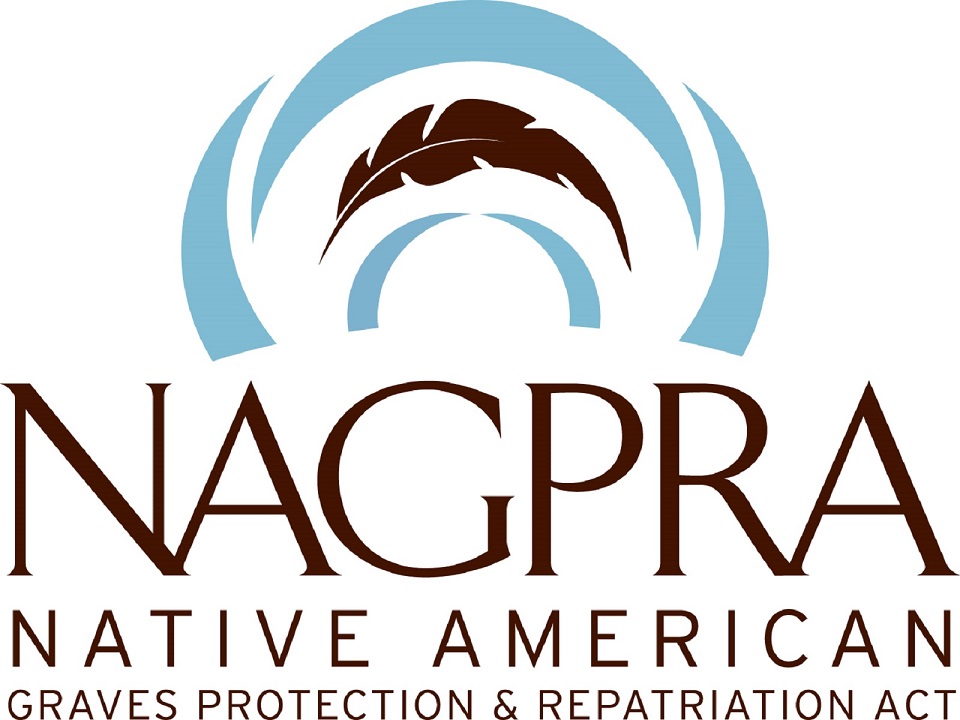
When Dartmouth College was established in 1769, the school aimed to provide education to the Native American community in the surrounding area. Throughout the next two centuries, this mission remained largely incomplete. Few Native Americans were admitted to Dartmouth, and those who were admitted received insufficient support during their time at the College. In 1970, President John Kemeny announced a recommitment to this founding goal. In the years since 1970, over 1,200 Native American students have attended Dartmouth, and the Native American and Indigenous Studies Department provides an academic opportunity for students from all backgrounds to further their understanding of the issues and history of Indian Country—the shared socioeconomic and geographical conditions of Native Americans and Indigenous peoples today.
The Native American Graves Protection and Repatriation Act was passed in 1990 and requires that museums and federal agencies identify any Native American human remains as well as objects of cultural significance and partner with the appropriate tribal and Native Hawaiian agencies to repatriate the items. To remain in compliance with NAGPRA, forensic anthropologists and archeologists audit museum and university collections to ensure that these agencies are meeting NAGPRA standards.
Last week, Dartmouth College released a statement that “skeletal remains of 15 individuals identified as Native American” were found among the collections of the Anthropology Department and the Hood Museum of Art. Additionally, 100 bones were found without a Hood Museum catalog number and were thus deemed “potentially problematic.” Some of these bones were used as part of human osteology labs earlier this academic year. The College claims to be “actively pursuing” the repatriation as expected by NAGPRA standards. The first inventory of Dartmouth’s collection was recorded in 1995, but recording errors from this initial inventory are cited as the reason for last week’s discovery.
What the external review exposed was the failure of the College to uphold its recommitment to Native American students and the greater Indian Country. This great negligence comes as a direct result of bureaucratic oversight, both at the College and at the federal level. In the statement released by Dartmouth on March 28, President Hanlon is quoted as saying, “I am deeply saddened by what we’ve found on our campus. On behalf of Dartmouth, I sincerely apologize to our entire community.” While apparently genuine, Hanlon’s apology elicits confusion. Hanlon serves Dartmouth College as an Executive Administrator and occasional Professor of Mathematics; he has no particular affiliation with the Anthropology Department. As a figurehead, he must, of course, speak on behalf of the College. Yet it is difficult to place blame on Hanlon or any member of his Administration. Professor Jeremy DeSilva, Chair of the Department of Anthropology, did not have a comment included in the College’s statement. Even as department chair, while he would certainly possess greater knowledge of departmental operations, DeSilva played no role in the acquisition of these remains. The unethical procurement of these bones stems from a group predating Dartmouth’s 1995 NAGPRA review.
Are the promises of repatriation and platitudes from the Administration enough to repair the broken relationship between the College and Native American and Indigenous populations? The answer to this question is clearly no, but the actions necessary to begin reconciliation are confounded further by endless bureaucratic measures and tedious green-lighting processes to properly handle and return the found ancestral remains to their places of origin. Provost David Kotz is assembling a group to address the aftermath of the external review and will oversee the handling and repatriation of the non-Native American remains and remains from other countries. An outside hiree will be in charge of working with the Anthropology Department, the Hood Museum of Art, and the Division of Institutional Diversity and Equity on the issues concerning NAGPRA and the related findings. No osteology courses will be offered for the “foreseeable future” in the Anthropology Department. These actions are commendable, but nothing feels truly sufficient to atone for the harm caused decades ago and the disrespect felt by students today.
What will the attitude be when yet another fault is found within the academic offerings of the College? The issue with all ideas of protection and repatriation lies in the impermanence of many of the necessary actions. Though a large press release was published as soon as possible—as far as we know—on Dartmouth’s recent NAGPRA violation, there is no telling when the next update will be issued and to what extent progress will be made on these issues. The College’s apparent haste in openly addressing its wrongs speaks to a certain commitment, but empirically this is one of many matters in which the institution has failed its students and faculty. While I am hopeful that the College will work to correct its oversights within the Anthropology Department and the Hood Museum, I remain skeptical of the effectiveness and timeliness of Dartmouth’s next steps with regard to the Native American Grave Protection and Repatriation Act.

Be the first to comment on "Hood Museum, Anthropology Dept. in Violation of NAGPRA"